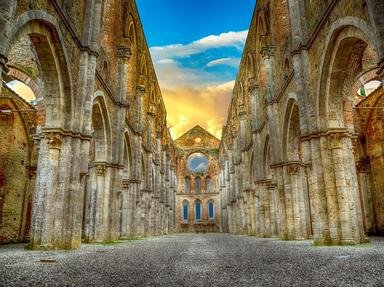Quiz Answer Key and Fun Facts
1. Sir William told us an interesting story that illustrated the weakest point within a castle. Under normal circumstances, which of the following is the most vulnerable part of the structure?
2. Siege towers have been used since ancient times to scale the walls of tall structures. What is another name for a siege tower?
3. By the way, Sir William says that one of Sir Richard, the Earl of Warwick's most important advisers is his military engineer. By what name is a military engineer known?
4. What an odd-looking machine. It is a tower that has an arm that can be manipulated. At the end of the arm is a spike. What is this siege engine called?
5. Believed to be the oldest siege engine, which weapon is used to break open the walls of a castle or shatter wooden doors?
6. Another effective siege technique is tunneling, which helps to destabilize castle walls. By what other name is this siege engine known?
7. What type of siege engine hurls bolts at opponents?
8. Believed to have originated in China, which siege engine uses a sling to hurl projectiles? It is considered to be the most powerful catapult.
9. This siege engine is used more to hurl objects at the castle walls, rather than throw objects over them, and it is powered by men. What is this catapult called?
10. The different types of catapults are very important siege weapons in Sir Richard's arsenal. Which of the following would a catapult NOT hurl during a castle siege in medieval England?
Source: Author
ponycargirl
This quiz was reviewed by FunTrivia editor
bloomsby before going online.
Any errors found in FunTrivia content are routinely corrected through our feedback system.

